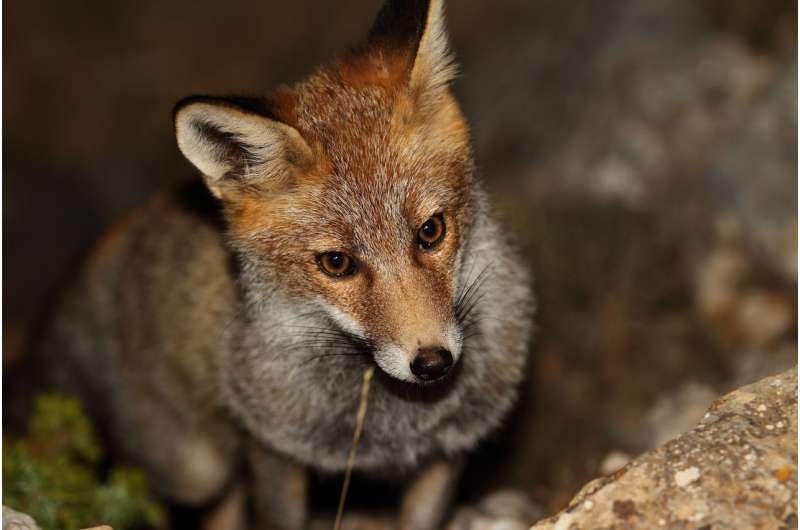Credit: University of Granada
An international team of researchers led by the University of Granada (UGR) has explained for the first time the scientific basis of the old Spanish saying 'perro no come perro' (dog eats no dog): for a carnivorous animal, eating carrion of another carnivore, especially if it is of the same species, increases the probability of contracting pathogens that could endanger its life.
This work, which also includes the participation of the University of Berkeley (USA), the University of Murcia (Spain) and the Miguel Hernández University (Spain), has been published in the Journal of Animal Ecology. This study provides new information about an idea whose origin goes back at least to the times of ancient Rome. The saying in Latin is "Canis caninam non est," which says, in a social context, that members of a certain guild tend to avoid conflicts among themselves.
The expression 'dog eats no dog' seems to have originated from empirical observations about the aversion of carnivorous animals to eat the carcasses of other carnivores. And, as Marcos Moleón Paiz, researcher at the Department of Zoology of the UGR and main author of this work, explains, "humans love to eat, but not anything, or at any price."
Among the countless species of animals and plants that inhabit the planet, only a handful provide the bulk of the carbohydrates and proteins demanded by mankind. Examples are wheat, rice, chicken and pork.
"Moreover, tastes change from one culture to another and from one person to another. Should the rest of the animals behave differently? Could a scavenger animal, the paradigm of opportunism, be selective in deciding what type of carrion is advisable to eat and which is not? These were the questions that gave rise to our study," explains Moleón.
The UGR researchers have verified that this aversive behavior is for a good reason: For a carnivorous animal, such as a fox or a marten, eating carrion from another carnivore, especially of the same species, increases the probability of contracting pathogens that could endanger its life. Prions such as the virulent kuru, which, in the 1950s, ended the lives of many natives of Papua New Guinea who practiced cannibalism rituals, are examples of such pathogens.
In order to carry out this work, the researchers monitored and studied a total of 89 carcasses of carnivorous and herbivorous animals during the winter months of several years between 2005 and 2016. The carcasses were monitored by automatic cameras that were fired upon the detection of movement. The study was carried out in two different regions of the Southeast of Spain: the Sierra Espuña and Sierra de Cazorla mountain ranges.
A field experiment was also conducted in which apparently identical pieces of carnivorous and herbivore meat were placed in different sectors of Sierra Espuña to check whether carnivorous animals can "smell the risk." This information was complemented by mathematical models that simulate the evolution of the feeding behavior when carrion of both types is offered to hypothetical carnivorous animals.
Throughout evolution, carnivores have learned to discern safe and unsafe carrion, probably because of the smell. "This co-evolutive relationship between carnivores and their parasites has not been described so far, and it indicates that carnivore carcasses play a very different role from carcasses of other animals in ecosystems," says the UGR researcher.
More information: Marcos Moleón et al. Carnivore carcasses are avoided by carnivores, Journal of Animal Ecology (2017). DOI: 10.1111/1365-2656.12714
Journal information: Journal of Animal Ecology
Provided by University of Granada
























